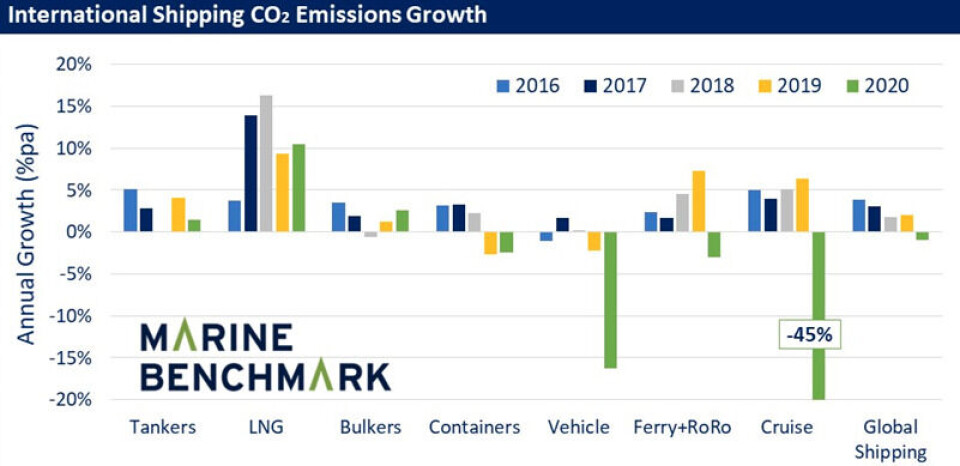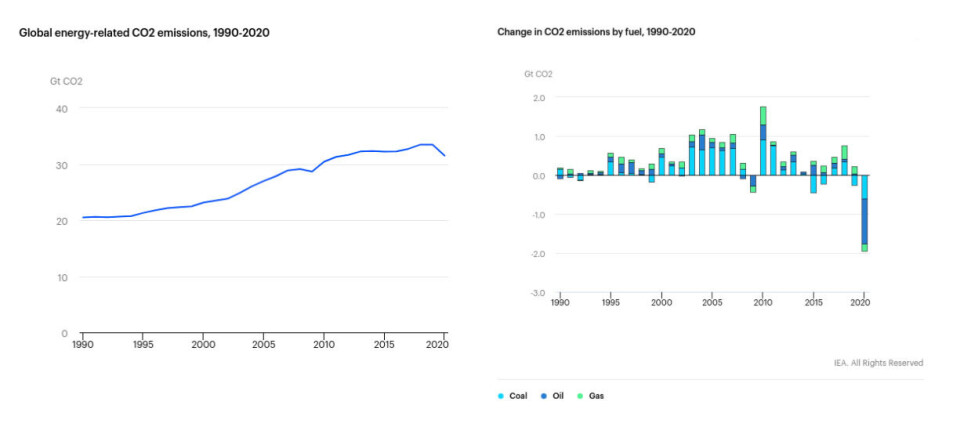2020 CO2 emissions were cut in the maritime sectors

New metrics note that the cruise and cargo shipping sector saw a decline in carbon dioxide emissions.
By Michael McGrady, Maritime Direct Americas & Pacific Correspondent
WASHINGTON — New data from Marine Benchmark notes that CO2 emissions in 2020 among what the company calls their so-called ‘big-3’ – tankers, bulkers, and containers – has increased by 1.2 percent and with a 2.4 percent decline in container emissions offset by the rapid growth in the bulker and tanker sectors of the wider industry.
“The Coronavirus pandemic has had a varied effect on shipping, with tankers and bulkers generally performing well, while other sectors faced headwinds as consumer demand plummeted,” said Torbjorn Rydbergh, the CEO of Marine Benchmark, in a statement.
“Whilst the overall result is a decrease in carbon emissions for last year, the effect may be temporary as the current recovery in global economic demand points to stronger 2021 shipping activity.”
Overall, global shipping CO2 emissions decreased by 1 percent in 2020 due to the COVID-19 pandemic and the curtailed shipping activity. Ship Insight reports that the decline in CO2 emissions could be linked to the cruise sector’s no-sail orders across the world.
According to other metrics, marine heavy fuel oil is 86 percent carbon which implies that roughly 3.15 tons of CO2 per tons of fuel consumed. The carbon content of diesel, by comparison, is only slightly higher, so are the C02 emissions per tons of fuel consumed.
Commercial shipping has seen a rebound in economic activity. Passenger shipping has been primarily sidelined since the first quarter and will persist into 2021 before a considerable recovery from the pandemic’s impact.
The pandemic’s disruption has been a significant impact across the plethora of industries impacted by seafarers and other maritime professionals. As 2021 persists, cargo volumes are sporadic across the various seaports and terminals around the world. However, the numbers shared by Marine Benchmark lack further nuance and accountancy for other impacts on the industry.

Of course, this lack of accountancy includes the impacts of the ongoing crew change crisis and vessel congestion in major ports. Maritime Direct reported a day prior that shipping industry leaders predict congestion to last until the summer — perhaps longer.
Outside of the maritime industry, the COVID-19 pandemic had a significant impact on emissions around the world. Newly released metrics from the International Energy Agency (IEA) show that 2020 saw a total drop-off in global CO2 emissions by 6 percent.

Since the Second World War, this is the largest decline in emissions, having kept about 2 billion tons of ‘planet-warming gasses’ out of the sky.
IEA also noted that eliminating emissions equates to the entirety of the annual CO2 output in the European Union. However, the emissions numbers are likely to increase due to the push for economic reopening.
“The rebound in global carbon emissions toward the end of last year is a stark warning that not enough is being done to accelerate clean energy transitions worldwide,” said Fatih Birol, executive director of the IEA, in a statement reported on by Time Magazine. “If governments don’t move quickly with the right energy policies, this could put at risk the world’s historic opportunity to make 2019 the definitive peak in global emissions.”










